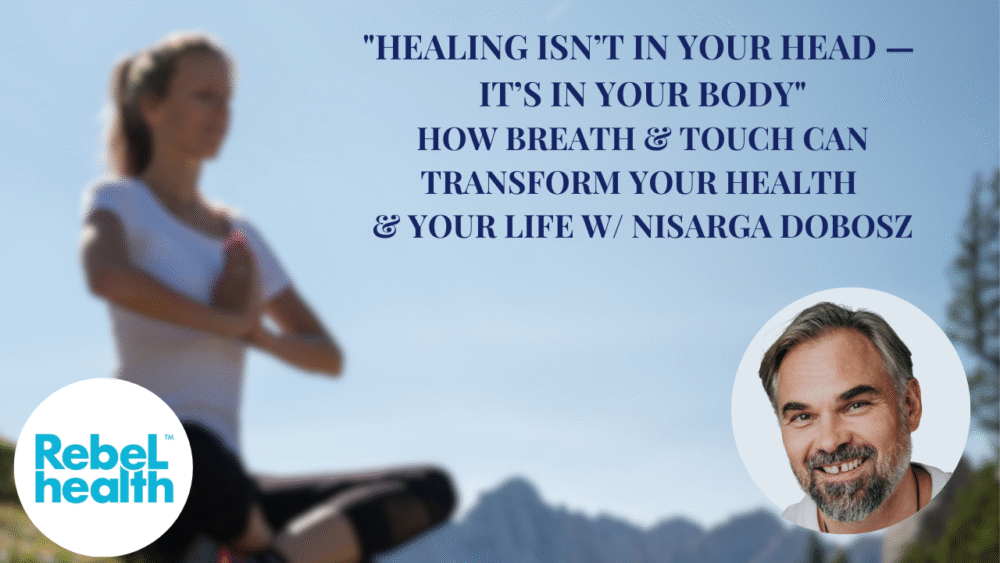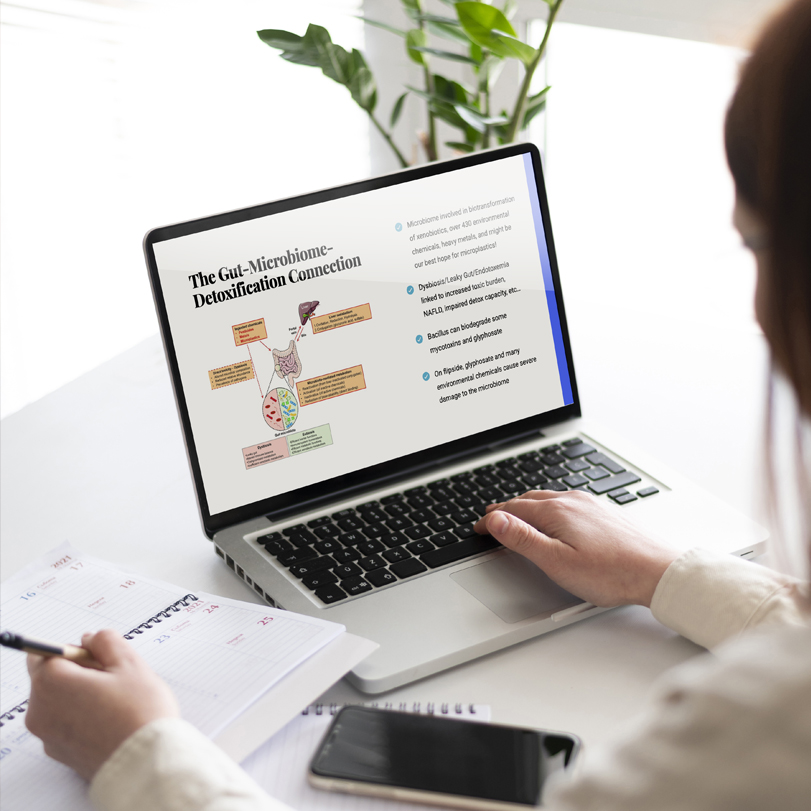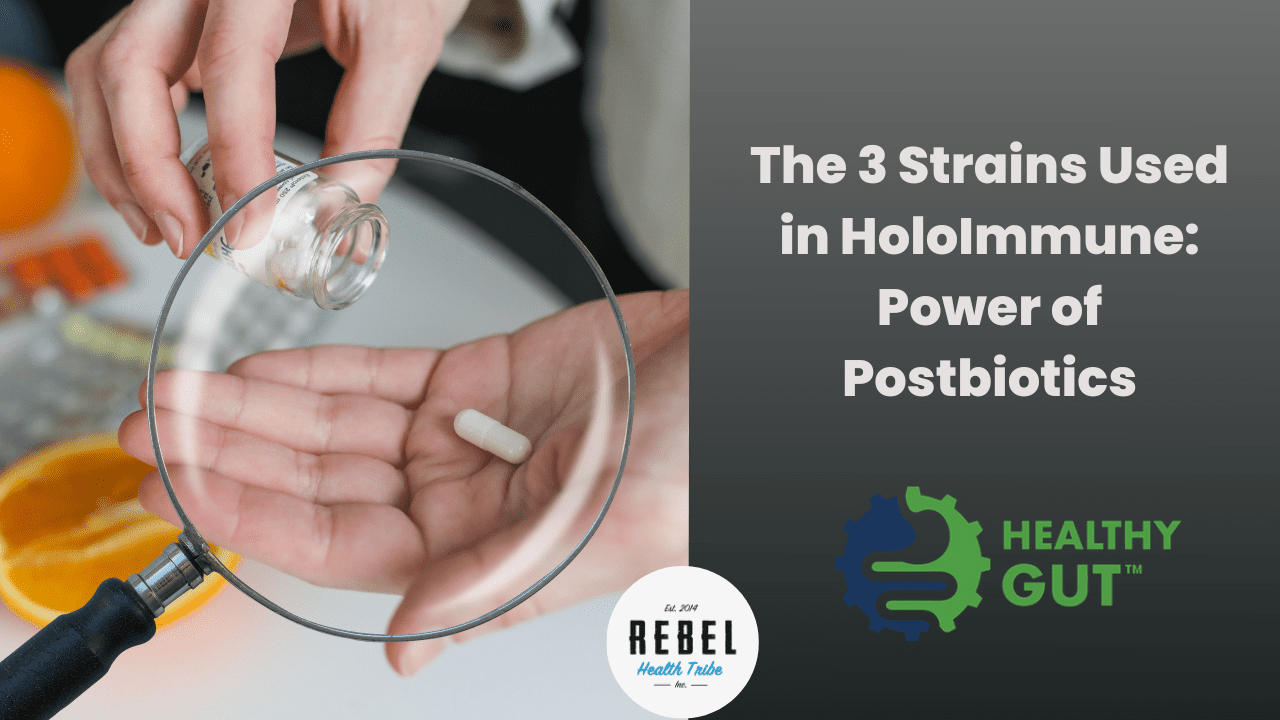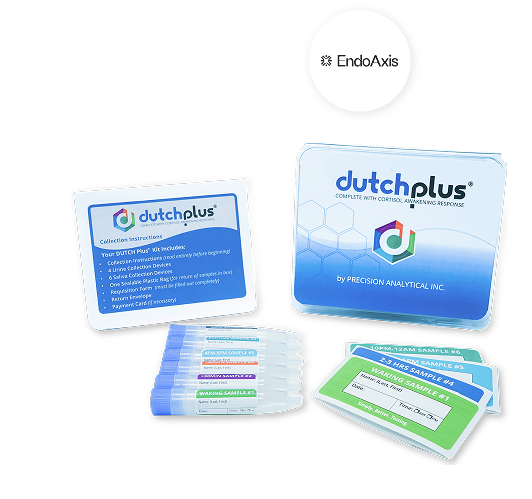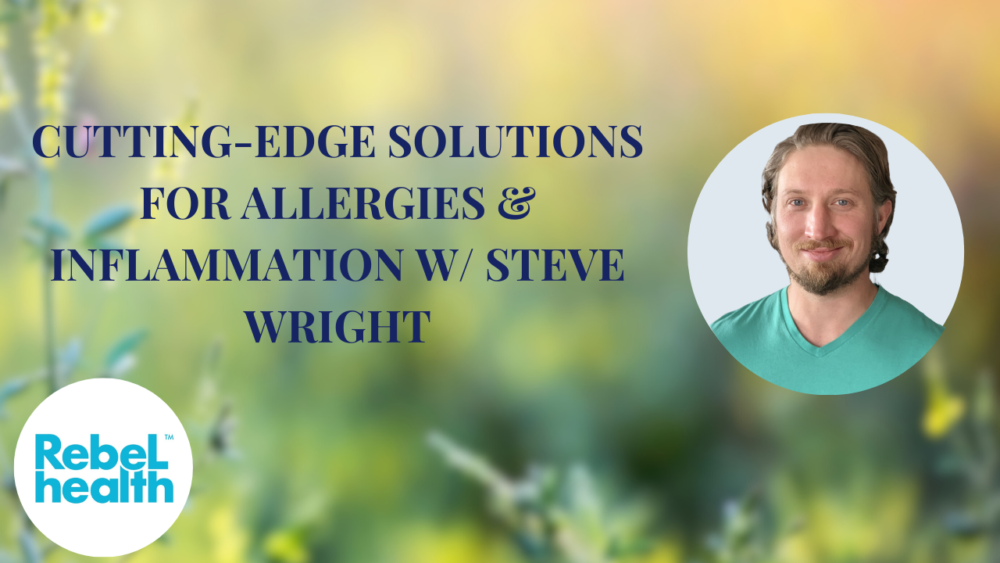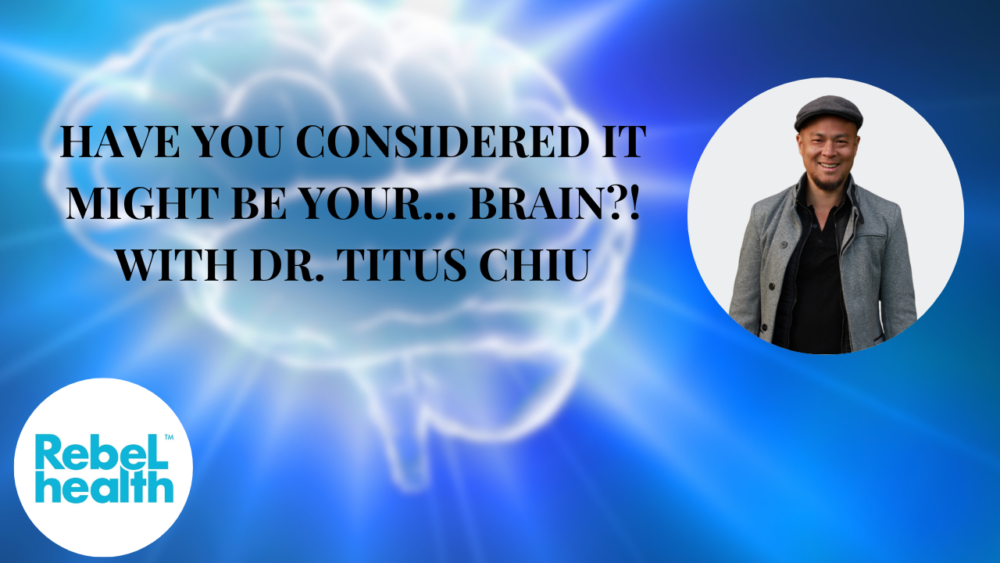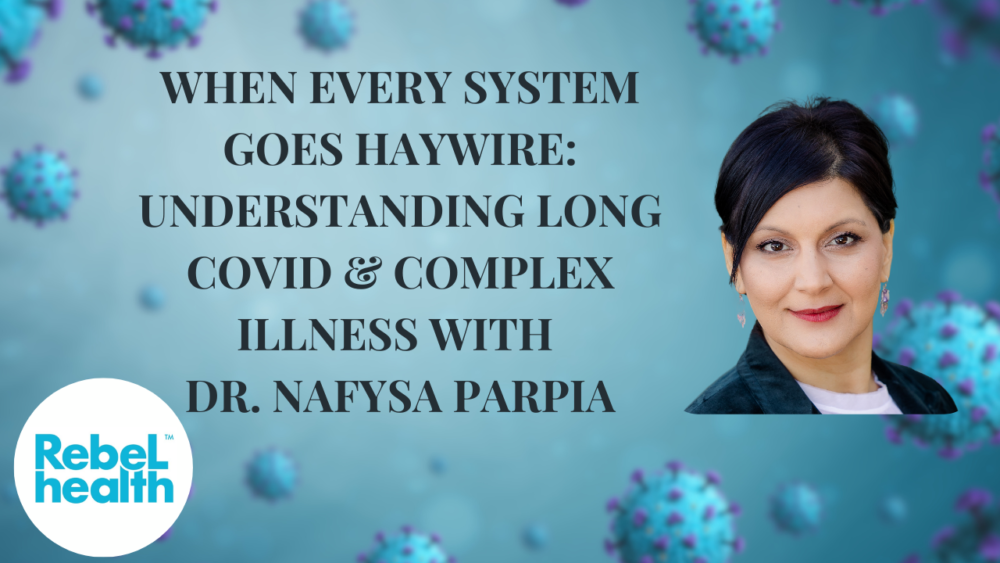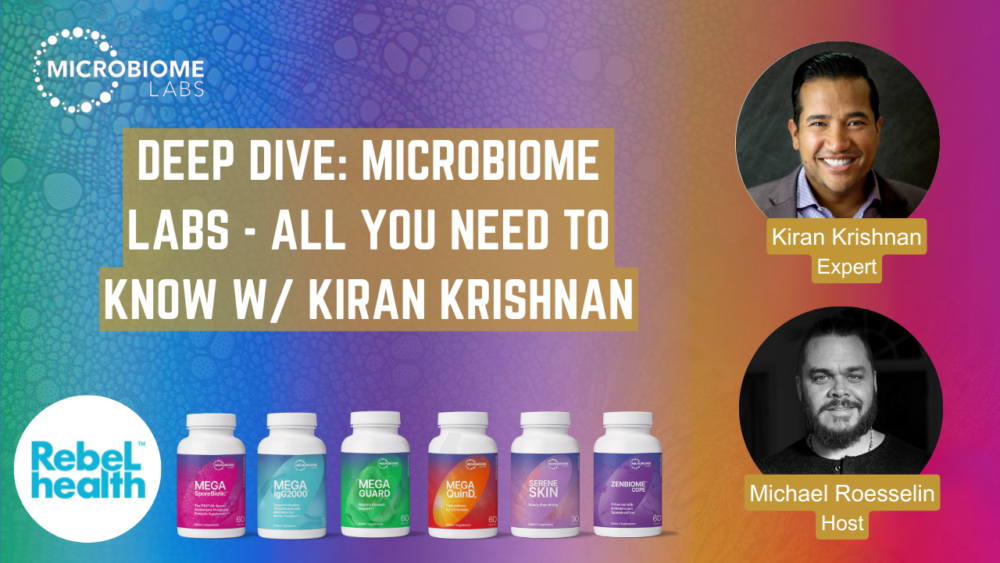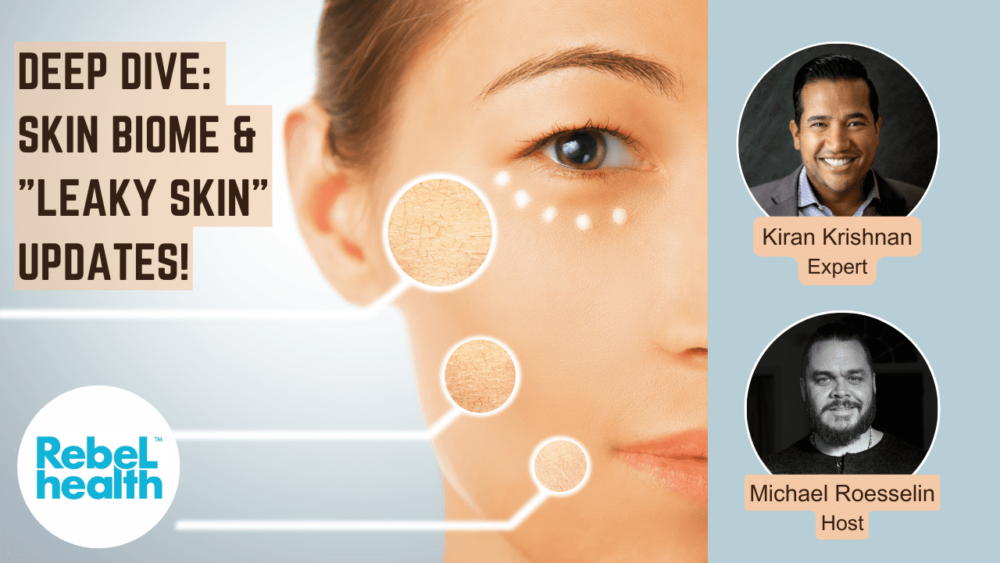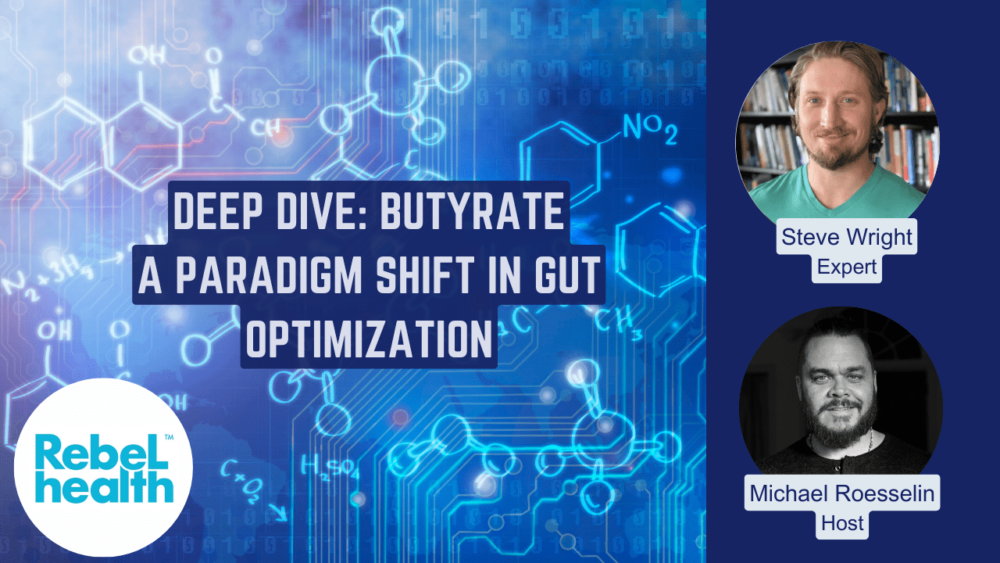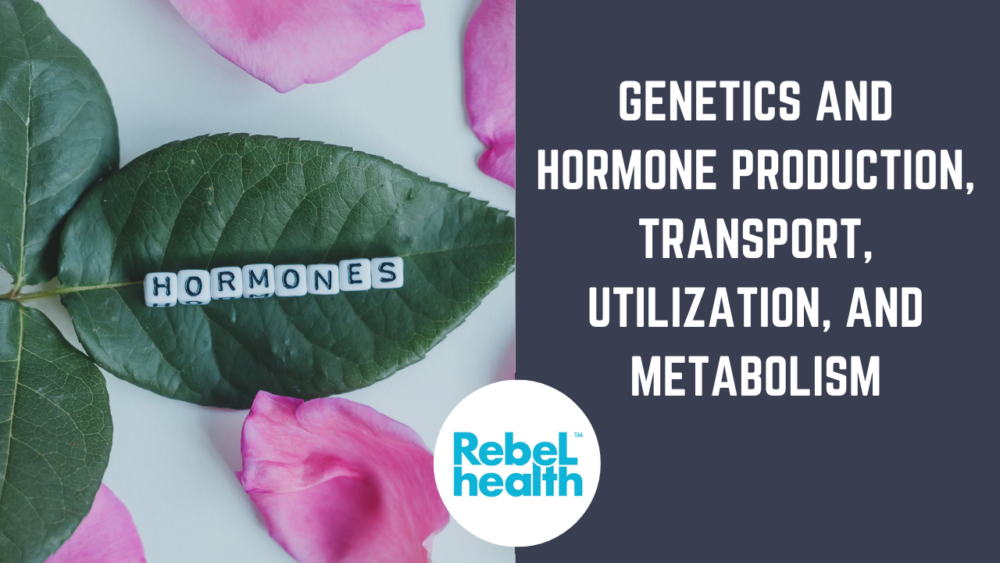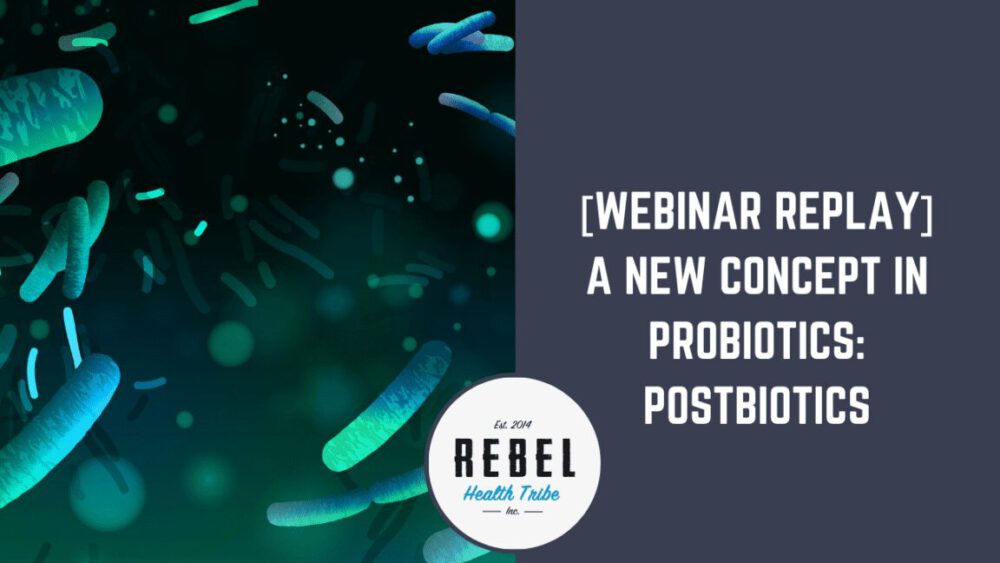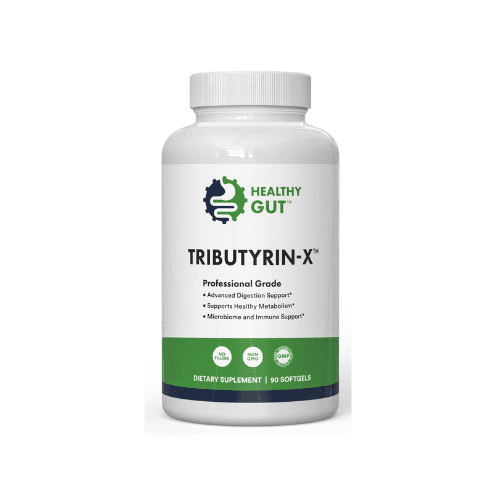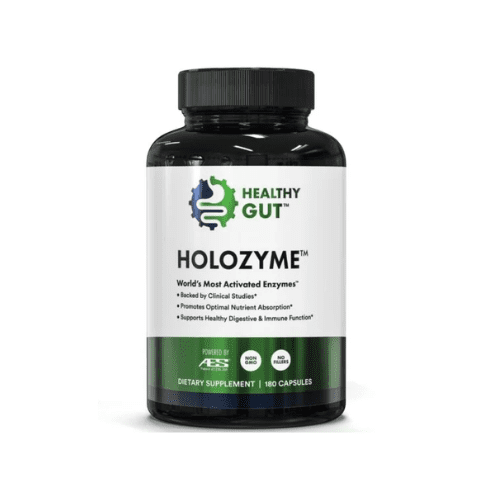[Michael Roesslein]
Hey Luke, welcome to the show.
[Dr. Luke Sniewski]
Michael, thank you for having me.
[Michael Roesslein]
I’m excited, man. I it’s, it’s a rare. I get to interview somebody that I haven’t talked to in some other capacity before about these things, uh, either at some conference or somewhere or some other conversation.
And, uh, we kind of know each other. We’ve been at a conference at the same time, but we’ve never, the conversation you guys are about to hear has never happened before. It’s unscripted.
Uh, I’m intentionally not writing questions and I am going to be asking questions to Luke that I genuinely want to ask to Luke because I want to know the answers, not scripted podcast questions. So not to put in, which means he doesn’t know what the hell I’m going to say either.
[Dr. Luke Sniewski]
So exactly. I was actually, I woke up this morning here in New Zealand, 12 hours difference from you. And I’m like scouring, what are we going to talk about?
And there’s nothing I’m like, I have no idea what’s about to happen.
[Michael Roesslein]
I I’m like the opposite. I don’t want, I don’t want that. I think it gets contrived in conversation.
So I know your background enough to know what we should talk about. And we had a little two minute brief before we started. So, um, like myself and like a few other folks that I’ve chatted with recently, your work, I’ll let you describe it, but it kind of blends lines between, um, when I started to cross lines, I said like this side of healing versus this side of healing.
This was a term I would use, but then the more I got into either of them, I realized that even that term is kind of silly to an extent. So how would you describe what you do?
[Dr. Luke Sniewski]
Well, in a single sentence is I’m reconnecting people to their body, right? And I’m using different practices, modalities, and approaches to do that. But similar to what you’ve described, sort of this, this aspect of healing versus this aspect of healing, sort of this holistic way to view the process of healing.
I would say that as I began my own learning journey, that these different approaches or philosophies or viewpoints began to reinforce one another. So it was almost as if it was a, a solidifying of premises and assertions that I was becoming, uh, becoming or beginning to realize around health. So when I learned something in, let’s say nutrition, that was actually supporting what I’d learned through personal training or whatever, which was what I was getting, which, what I was, which I was also learning from massage therapy.
I’m like, okay, if they’re all saying the same thing, I think I’m onto something here. And it just kept reinforcing in a way that allowed me to see a more complete picture of health.
[Michael Roesslein]
I love the way you explain that. And I had a very similar kind of experience over the, accidentally, the people are like, did you choose to, I’m like, no, I just went to the next thing that was the next thing I needed to understand. Um, cause you mentioned personal trainer.
I was a trainer. That’s kind of where I started. And then I didn’t do massage therapy.
So I think there’s a deviation there, but I went from, you know, uh, training and I got a master’s in exercise science. I thought I wanted to work with athletes until I did. I know that I know these guys are super athletic and then man, they all suck and they don’t want to listen to me and I don’t want to do this and I hate it.
And then I got one client on accident who had back surgery like three months before and he was having a lot of trouble. And I helped this guy be able to like walk up the stairs and I found that way more rewarding. So I switched, but was fitness.
Then it was fitness by itself. Doesn’t do it. Like you can’t treadmill somebody else being healthy no matter how hard you want to.
Uh, so then nutrition came in and then like I learned that that’s not all of it either. So then I went to like lifestyle stuff and a little bit more in depth around like stress and those kinds of things. And then, and then, uh, then the wheels fell off and those things didn’t help me when I came into like my own time of need.
And that’s where I wound up doing, going the other route about six, seven years ago towards the trauma, the emotional side, the nervous system. And that’s, that’s how I found Luke. He’s a, he’s a teacher, I don’t know, a facilitator at compassionate inquiry, which is one of the training programs that I’ve completed with Dr. Gabor Mate. And so that similar trajectory, I saw you nodding when I was saying like the, you can’t fitness somebody into health. Right. And, and that’s not to say like fitness training and exercise isn’t important, but, uh, can you just speak on your experience of like those kinds of layers of, yeah.
[Dr. Luke Sniewski]
And like you, I, I actually started as a professional athlete. So my bachelor’s wasn’t in anything related to health or wellbeing. I had a bachelor’s in accounting, so I didn’t even know what to major in.
And my brother’s like, this will help you in life. I’m like, sure. And so I got a bachelor’s in accounting, but I was playing football at the time.
So I played professional football in Italy where you’re living right now, uh, for the Italian football league. Oh, you mean American football and American football. Yeah.
American football in Italy. And so I finished up my time in Italy. I go back to the States and I’m an accountant and I’m sitting in a cubicle and, and I’m realizing that I’m more injured and I’m experiencing chronic pain.
Sitting at a desk in this like cubicle than I did when I was playing professional football, more pain than I play professional football. And so that inspired me to, to learn about the body in a different way. So I did go into the gym setting first as a personal trainer.
And like you, I realized, well, it doesn’t matter how much exercise to do. This isn’t, this isn’t it. Something’s missing.
And so the way, the reason I went to massage therapy and neuromuscular therapy was for me, the, the, the, the most significant short term intervention that we can do on someone’s actual physical body is probably through touch and fascial manipulation and tissue manipulation long-term is probably exercise. So I liked the contrasting benefits of both. And then like you, let’s go into nutrition.
We’ll go into the functional medicine, the testing. At one point in Santa Monica, when we had our wellness studio, we were testing hair, we’re testing saliva. We’ve got, you know, we’ve got everything going, utilizing as many different methods as we can to help someone.
And it was always never enough. It was all, something was always missing this lifestyle component. And even beyond the lifestyle component was this mindset component.
Like what is actually dictating and driving the behavior of others. And I’m always learning through myself as you are. And so my own burnout, my own, my own way of taking my client’s goals on my own shoulders and treating them as my own.
And all of a sudden I’m burning up because I’m taking, I feel attacked and it was actually, no idea what you’re talking about. Yeah, exactly. Right.
And so it was actually meditation that taught me how to, to create that semi permeable membrane as Gabor talks about it, where it’s permeable enough that we can have empathy for and be present with the process of another person, but also firm enough that we know it’s our stuff and we can keep it on our end and we can keep what’s not ours out. And it was actually that, that, that create the formation of that membrane through meditation that allowed me to come back to client work because I swore off client work. I closed down my wellness place in Santa Monica and I said, I’m never working with people again.
I got a master’s in sustainable food systems because I’m like, well, if I can’t help people on an individual level, because it’s just too much, how about I help it on the macro level and through the systems that govern our food supply in the United States? And once I saw the agricultural, the social, the environmental, the political landscape of our food industry, I was like, I said, fuck that. There’s no way.
There’s no way. I’m like, well, I guess I’m done helping people because that cannot be helped. Yeah.
Yeah. So, so it was lovely to learn, but it was also lovely to learn a very nuanced perspective on sustainability from all those aspects. And like I said, I went, I discovered Vipassana meditation in Thailand and it was just a light bulb moment.
I knew that this was the path forward for my personal and my professional practice. And I went back to school, got a PhD in psychology, which was a strange, you know, bachelor’s in accounting, master’s in sustainable food systems, a PhD in psychology. And I was working with porn addicts using meditation as an intervention for men with pornography addiction or perceived pornography addiction.
So again, learning to go behind, going into the kitchen and seeing why, what’s going on there that’s causing these behaviors and these reactions to be that the way, to be the way that they are. Um, and concurrently with my PhD is when I was training in compassionate inquiry, because like most people who read a Gabor book, they’re like, holy crap, light bulb moment. They just get so inspired by the worldview and teachings of that guy that it leaves you with nothing more like just so much inspiration to look inward and see what’s actually happening here in my own, in my own heart, in my own mind.
And so that, that’s how I ended up where I am now.
[Michael Roesslein]
A lot to unpack there. Thank you for sharing. There were a few moments where I was like, remember that, remember that, remember that.
And what the membrane sticks, because I, I was laughing when you said I’m never working with people again. I haven’t worked, I’ve done a lot of client work in some of the trainings for compassion inquiries, one of three professional trainings in that I’ll quote side of things that I’ve completed in the last six years. And I’ve done a lot of client sessions there, like in those trainings, but I stopped working with clients in health seven years ago and started focusing on like macro size educational.
We did a film series. I produced a lot of online events. We do podcasts.
We do a lot of education. I lead people to the people who will be more than happy to help them. But I was the same way where it was like exhausting to the point of, am I well exhausting and questioning my own, because I didn’t understand what you’re talking about, about addiction and, and, and what we now understand about addiction.
So I would run all those labs, spend hours going over them and their case history. I had this, like, I had the most elaborate intake thing that you can make. Like it was like a gazillion, I can’t, I can’t imagine how I would react personally now if somebody handed me something like that.
It was like, in order for me to work with you, you need to fill out this thing. I’d be like, dude, I’m out. Like, I’m out.
This is like 30 pages. But I’ve, I thought if I just knew every single thing they ever did and ever ate and ever had and ever felt and ever, whatever. And then I crossed that with the labs.
I could come up with the perfect everything for them. And then I would, I would craft this. Insanely detailed program for them.
Here, change these 192 things.
[Dr. Luke Sniewski]
Michael, I got a question. I got a question for you. Did you treat it as a, as a work, an art masterpiece and you had to format it and design it?
I mean, I, I can relate fully to that experience.
[Michael Roesslein]
No, it has to be perfect. It has to be perfect. If I hand this to them and it’s not perfect, I’m ruining their life.
I’m worthless. Like this thing has to be perfect. And then, and then, and then it would have like, here’s these, you know, supplements.
Here’s this lifestyle stuff. Here’s this, here’s this, here’s this dietary thing. Here’s the boom.
If you just do these 162 things, you’re going to be awesome. And then two weeks later, I would have a conversation with them. And most of them would be like, I did like a couple of the things.
And then I was like, damn it. These people are so lazy and they don’t want to get better or I suck, but it can’t be that. Cause this program is perfect.
And I spent tons of time on this and it’s for sure. Right. Like if they do this stuff, they’ll feel better, but they’re not doing it.
So like, what the hell is wrong with these people? Um, that they’re not doing it. And I blamed them.
And I didn’t understand, even if it wasn’t conscious, I was just like, Oh God, I spent so much time on that. And now they’re going to think I’m shitty. Cause they’re not getting results because they didn’t do the thing.
And it was one experience that I had. And I’ve shared this kind of in detail in a different episode. I’m not going to go too into it.
I had a, I had a client who had that same thing two weeks in started crying, saying I didn’t do any of the things I saw, et cetera, et cetera. And then I didn’t know any at the time I’d done no emotional training, no meditation, no trauma work. And I was like frozen.
Cause that’s outside of the scope of my little protocol brain. I was like crying, client panic, don’t say anything. And I didn’t say anything.
And she just kept talking. And she told me that it was almost two years to the day since her son died. And that he died in a car accident and that he died in a car accident because she didn’t give him a ride to where she, where he wanted to go because she had to work and that that’s her fault and that all of her health problems started and her weight gain started and et cetera, started immediately after that.
Now this wasn’t on my intake, my, my brilliant intake form that I asked every question, didn’t ask about that. Cause why would I, and I didn’t say anything for probably a half hour. Like, cause I was just in like shock.
Don’t know what to say. Don’t say the wrong thing. And I, she just kept talking and kept talking and kept talking and it seemed like that was going pretty well.
So I just, and then I started asking her questions about her son, like just as a friend almost, like I was like, this is doomed. This is screwed. I don’t know how to help this lady.
I’m just going to be her friend right now. At the end of the conversation, I knew one book in the world that I knew of that maybe would help with an emotional thing. I don’t even remember what it was.
I was like, try this book. Two weeks later, talk to her. She got the book.
She read the book. She got a therapist. She started doing trauma work.
She started doing half of the stuff that I had put in the thing that she hadn’t done before. She said, I’ll call you when I need you again. And I was like, okay, that woman still checks in with me every once in a while and tells me how awesome she’s doing and how much weight, I didn’t say a damn thing.
Like I didn’t, cause I would have just screwed it up. So I didn’t say anything. And that moment is when I learned that what I knew how to do was insufficient.
[Dr. Luke Sniewski]
Yeah. And that similar moments of insufficiency in my professional life as well. I mean, I could essentially mirror and repeat everything you’ve shared.
Cause there comes a time where you realize it doesn’t matter how much, you know, it’s never enough. There’s something beyond the knowing, something beyond what the mind can intellectually grasp or explain or provide and, you know, traveling around the country, the entire country of the U S collecting certifications, collecting all these things. And no matter what, it was never enough.
If I’m spending three maximum of three hours a week with a client, there’s 150 other hours that the client is on their own. And that’s when they’re, that’s when the real work happens. And so if we don’t understand what’s calling the shots, the circuitry, the subconscious mind, which to me is the body, the body is the subconscious mind.
If we don’t understand how the nervous system, how emotions, how these different chemicals are contributing to the, to the, to how a person is navigating their life, they’re going to find themselves. And this is a common experience. I don’t know how that donut got in my mouth.
I don’t know. I just opened the pantry. I didn’t know how I got there.
I don’t know why all of a sudden I’m drinking or eating or whatever it may be. Because 95 to 99% of our behaviors are unconscious until we start paying attention.
[Michael Roesslein]
I love it. And I, you’re, you gave a presentation. We were at a conference in Romania, uh, this last year, I guess now, and, and Luke gave a presentation kind of on, I don’t know how to, I don’t remember the title of it and I don’t really know how to describe it, but it was like, uh, it really helped understand certain things like this kind of, uh, around core.
[Dr. Luke Sniewski]
Yeah.
[Michael Roesslein]
But how do the beliefs shape your actions? Right. So maybe we talk about that a little bit.
And I think that, uh, the thing I always heard from those clients, right. We’ll just use this as an example. The ones that, uh, didn’t do the things, right.
They, they show up for their next thing and their head’s down and they’re, they’re, they’re, they don’t want to talk to you because the last thing they want to do is like, say, I didn’t do this thing. Um, I can’t stick with this. I don’t know why I don’t do it.
I want to feel better, but I can’t do the things, uh, et cetera, et cetera, et cetera. I suck. I’m stupid.
I can’t do this, et cetera. So like, that’s a, we’ll call that an avatar that I think a lot of people out there can probably relate to. And I’m one of them.
It took me a, I’m not even, I don’t want to say there, cause there is no there. I’m not even there yet with a lot of things that I’ve wanted to do and change, but I have changed a lot, but a lot of it was like an uphill slug because I didn’t understand what was working against me. So can you speak to that?
Yeah.
[Dr. Luke Sniewski]
Yeah. I think that, well, firstly, I love what you just shared, you know, where you talked about, you know, you’re not there. There is no there.
I’m going to pull a Gabor quote here and says the more we, the more we see health as a practice rather than a problem to fix, the more we encourage the body’s natural potential to be healthy. Right. So that’s, I like that as a starting point for anyone that is seeking or moving towards health, that it’s not some destination.
It’s just this constant, ever-changing, ever-flowing process with every breath, every decision we’re flowing between either moving towards improved health or towards a state of dysfunction. You can’t stop that. But in relation to this, this avatar, as you call it, which it’s actually quite a great description.
It’s this thing we overlay on our essence, not good enough, stupid, weak, not worthy, whatever it may be. And the thing with this belief or these beliefs and any beliefs is at some point they had to serve a functional purpose. They had to, they had, they were an adaptation for a reason.
We don’t just make up a belief like I’m good enough for the sake of, for the sake of it. And in fact, we wouldn’t choose it for its self-destructive capacity because why would we do anything that harms us? We don’t choose that.
We, we, we go as organisms, as people, we go down the path of least resistance down, down the path of comfort. That’s what we are designed to. We’re going in that direction.
So at some point it must have been the path of least resistance. It must have been helpful for us to choose I’m not good enough. And it probably stems, and this is according to the work of Gabor and obviously many others, if we do sort of go back in time and we reflect and we were almost watching a child in an environment with caregivers.
And here’s some stressful situation with parents. And this child has the choice. Okay.
So here, here’s this external environment telling me to don’t cry or yelling at me or whatever it may be. So here’s this small child who is biologically, and in fact, every way dependent on their caregivers for survival. If that child has to choose between actually my environment is pretty screwed up right now.
And this is the problem, this environment that is looking after me. This must be the problem. If that was the case, that child, that child survival is at risk versus option B.
You know what? The environment is okay. I’m actually the problem.
Thank the Lord, because now at least I can survive. I’m in control of that because you know what? I may be screwed up, but I have control over that.
So for a child, it’s not a choice. Of course, this cognitive process that I’m talking about, it doesn’t happen for a child. For a child, it’s just automatic.
It’s instinctive. That child’s nervous system and entire body, the circuitry is designed for belonging. I need to belong to this environment in order to ensure and maintain my survival.
So in that moment, we take on a behavior. We don’t take on the belief of I’m not good enough. It doesn’t happen for that really young child.
What that child learns instead is an adaptive behavior. So I learn, okay, it’s not safe to cry or whatever it may be or express myself because when I do that, I get that reaction from mom and dad. And I don’t want that reaction from mom and dad because I need to make sure they love me so I get fed and I survive.
So then we learn this coping strategy, this behavior. Over time, we practice that behavior until that behavior begins to shape how we navigate the world. It shapes our personality.
It shapes whatever it may be. And then at some point, maybe, and this is a if, not when, because at some point for some people, there comes a point in your life, in their life, where they say, you know what, this isn’t working for me. Something about the way I’m living life, this isn’t right.
And so they start asking why. And maybe someone listening to this can reflect at that moment when they realize, you know what, something’s not adding up here. I need to figure this out.
And then they start reflecting and looking backwards and they start trying to explain. Well, how do I explain this way that I’m being now? If I follow this way of being, this way of relating to the world, and eventually I track it back to my childhood, and now I figure out a way.
The mind is incredible at trying to figure things out. So how do I explain that? How do I explain that behavior?
And of course, we don’t arrive at the conclusion of, oh, my God, look how well that child learned how to belong, that child learned how to survive. We don’t say that because we don’t understand the purpose of that behavior. Instead, we judge that behavior because it’s had a negative impact on us in adult life.
So in adult life, it’s self-destructive and it’s limiting because it’s preventing us from accessing and expressing our authenticity. But back then it wasn’t doing that. It was helping us to survive.
We don’t have that understanding yet. So we look at that and we say, oh, my God, look, I must have always believed that wasn’t good enough. I was always behaving in a way that represented and showed that I believed that wasn’t good enough.
And then all of a sudden we accept this avatar because it explains our behavior for this entire timeline. I think it’s an important step, but it’s an incomplete step because if we stop there, we don’t see the protective function of that belief of not good enough. Not good enough helped me survive in an environment where I needed my environment to survive.
As an adult, I have more independence. I have more capacity to navigate the world as a self. And when we begin to shift from judgment like, oh, this belief is self-limiting, which creates more tension, more constriction.
When we stop judging ourselves in that way and we say, hey, thank you. Thank you. And we say, almost we say, this is the inner child work of many trauma approaches that people talk about and utilize.
When we’re able to meet our inner child or our inner self or that part of ourselves that was protecting us in order to survive, when we say thank you rather than a harsh judgment, all of a sudden that opening and that softness, it softens the nervous system. If our nervous system is tense and agitated and in fight or flight all the time, we will not change. And so now we’re coming full circle to this moment where you might have a client in front of you who has had that tragedy happen and cannot implement the 162 steps from your input sheet.
It’s because their nervous system won’t let them. Their nervous system is stuck. And in that stress state, we’re going to do what we always did.
We’re going to unconsciously reach for the self-soothing mechanisms to soothe this thing. But as soon as we start consciously looking inward and realizing, hey, these things are here for a reason. When we begin to relate to ourselves with some compassion, with some openness, all of a sudden that softening allows for what we might call experiential flexibility.
All of a sudden we are more flexible with our behaviors. We have more conscious awareness of it. And now those unconscious drivers, our subconscious mind, actually becomes quite conscious.
There it is. I can feel the impulse to move in this way. And I won’t.
I won’t grab that thing. I can choose something else. So a lot to throw at you and hopefully it’s…
[Michael Roesslein]
That was great. And that’s like one, that’s one, that’s one person. That’s one type of story.
Like that’s one type of story and that can be applied a lot of different ways. And the pattern you’re talking about, if I’m not good enough, usually is like, you know, they either make themselves small intentionally or like self-sabotage themselves a lot or become like super perfectionist to prove that they’re good enough or to, you know, something like that. But yeah, I have a shit ton of certificates too.
Maybe sometime we’ll compare how many certifications we have. Because if you just know all the things, you can fix all the things, right? But I love how you tied it back into the feeling and the nervous system because I didn’t get it at first when I started doing this, that kind of work, because my first exposure to anything on that side was like mindset work, which I now, I don’t want to, I don’t want to say anything too harsh, but, but, and, and, uh, I practiced this cause I used to go off on tangents about this and I realized that they’re working from where they’re at. So trying to change, cause that’s what I found first.
And I found, Oh, you have this belief, you have this belief, just say this other thing and believe this other thing. And I’m like, okay, cool. This book is awesome.
It’s going to make me awesome. And then I did the thing and nothing changed, except I hated myself more because I couldn’t do the thing that was in the book. And I was like, what the hell is wrong with me?
[Dr. Luke Sniewski]
That, because it didn’t address that super important component of seeing what you’ve learned to do as good, like as a, you know, And there’s, there’s another key reason that doesn’t work in the longterm, because a core belief that you perceive or label as negative or self-destructive or limiting, whatever it may be, it’s not a cognitive problem. It’s not a, it’s not a cognitive issue. Your core belief is just a story that you’ve overlaid on top of coping behaviors.
And so if the, if the original core beliefs were formed as a result of unconsciously practicing or practicing behaviors over and over again, until they became the belief, new beliefs are formed in the same slow, automatic way. If I behave differently in the world over time, guess what happens? New beliefs are formed.
Not because I just said, okay, I’m going to stop believing I’m not good enough because now I’m good enough. You actually have to practice being something other than not good enough for something new to emerge.
[Michael Roesslein]
And the, and the physical part where you said, I feel this, I’m going to reach for this, like starting to become really aware of this. And that’s where meditation and like awareness practices tie back in. One of my schools was pretty predominantly on meditation and states of awareness.
And at the time I didn’t really get what I was doing there or why I was there, but what it does is it makes you more conscious of that, that, that drive. So I’m feeling really anxious right now. If I eat that, I’m going to feel better and I’m not going to feel super anxious.
I’m going to feel calm, but then I’m going to feel like shit after I eat it. And then I’m going to, and then, and you get really aware of this, but that, that sensation, that thing, that’s the drive is the discomfort, right? The discomfort is the drive to do the thing.
And so the client who can’t stop eating the, what are those things called? I’ve been out of the States now for ho-hos. Yeah.
Yeah. Whatever those kinds of things.
[Dr. Luke Sniewski]
They can’t stop.
[Michael Roesslein]
They have whatever insert food. Um, when I first started trying to get healthy, I’ll put in quotes, I made the mistake of living in an apartment, uh, that shared a parking lot with a seven 11. And at the time I also smoked a lot of weed.
So if you combine being stoned with being able to walk to a seven 11, that’s open 24 hours a day, and this is when you decide you’re going to stop eating pints of ice cream and et cetera, et cetera, it’s just setting yourself up for failure. So that went sideways. And every time I did it, I would have the same.
Now I’m conscious of it. Now, in retrospect, I had the same agitation. And when I was a kid, food or video games, but food more than anything, like was my calming thing in my family too.
Like, uh, something great happened. Great. We’re going to get this food.
Something terrible happened. Awesome. We should get pizza.
Cause everybody’s sad or get ice cream or whatever. And then I learned that you soothe yourself with these things. So now I know that I was just doing what I learned how to do, right?
Like, and I was regulating myself and I had no other tools. I had no awareness of like, this sensation means I’m anxious. And let’s explore what that is or years, other things you can do for anxious.
Right. And I can make a choice. So I want to tie it back in.
Cause your book is, um, a really valuable resource. And his book’s called SOMA wise, and it, you work a lot in the body. That was the first thing you responded.
You, you help people get back in touch with their body. A lot of the things we’ve talked about here have been intellectual to, to a degree of like understanding this happens. So you did this thing, so you can’t do this thing.
Yes. Can you really hammer where that comes home in the body and why that was kind of your, I’ll call that your desk, your, your landing point with your work after getting a million certifications was I help people land in their body.
[Dr. Luke Sniewski]
Well, as a professional athlete, I took a body that was skinny, slow and uncoordinated. And over time I turned it into professional athlete. I was not, my body was not meant to play professional sports.
I forced it because it adapted to the environment that I placed it in. And when I realized, okay, well, I’d collected all these injuries and tightness and tension and pain from, from just beating my body up with this kind of training. Then I discovered yoga and I began to open my body in ways that had never been open.
And then I discovered meditation. And all of a sudden, every time I dive more deeply into the body, I’m actually touching something more spiritual and, and bigger than myself rather than just these superficial aims and goals. And when we talk about that discomfort that leads to the behavior, that’s what I discovered.
I discovered that, you know what, all of my external sort of ways of navigating the world are being dictated by this sensation, by this discomfort that I’m not paying attention to. So if I stay in connection and I learn how to hold, how to be with it, how to relate to it, and again, I like the way you described it, different ways of responding to it, a toolkit, if you might say. Then I have more, I have more, again, more flexibility in ways that I managed at present moment rather than the same old habitual way.
For you, it was food. For me, it was sexual in some way. It was either porn or women.
So those are, that was my chosen pathway or not even chosen, my predatory, whatever it was, the pathway that my physiology eventually aligned with as a Well, I was pretty good at using a bunch of them, I chose food for that.
[Michael Roesslein]
I was a well-rounded self-medicator, but all right, continue.
[Dr. Luke Sniewski]
Yeah, so, but the mind, here’s the thing, the mind is actually such an important part of connecting to the body because the mind is the gatekeeper. If the mind doesn’t have an understanding of why something is happening, it will not let that thing happen. And I use an ice bath as an example.
I have an ice bath in my therapy space. I do cold exposure with my clients for therapy work. And people are like, why do you do ice baths for talk therapy?
I’m like, well, I’ll tell you why. And at first, all of my clients, when I tell them, hey, you’re going to be doing cold exposure with me during this time together. And they’re like, yeah, yeah, right.
And of course, their mind immediately defends because their mind says discomfort and pain. No, thank you. I’m not doing that.
Why would I ever do that? And of course, I have to get their mind on board. So I explain to them, hey, here are the health benefits.
And for some, that’s like, OK, that’s plenty of information. Thank you. Now my mind will step out of the way and I’ll let my body have this experience of cold.
For some, however, that information of why cold exposure is healthy is not enough. I need more. So then I start relating to them.
I start relating to their own personal experience. I said, hey, you came to me because you said this aspect of your relationship is challenging with your wife or this behavior is ruling your life and you is governing your behavior and you can’t move away from this addiction. OK, well, what if I told you that if you’re able to practice sitting with the discomfort of something, you’re better able to respond to that unconscious driver in everyday life.
So that way, when you feel the impulse to reach for that cigarette or that drink, you’ll feel more empowered because you’ve already sat with something that’s quite uncomfortable. OK, and now I’ve gotten buy-in. The mind needs buy-in and understanding is what gives it buy-in.
So if I told the client, hey, you know that anxiety you’re feeling? You have to feel it. That’d be like, fuck off.
I’m not feeling that. I’m here to get rid of it. Why am I talking to you?
[Michael Roesslein]
I think I said the exact thing to the first somatic experiencing practitioner I worked with, like literally in exactly the same way.
[Dr. Luke Sniewski]
Yeah, exactly. So so here we are, because we don’t have an understanding of what this thing is that’s happening within us and why it’s there. But if we get the mind, the information and the understanding that it needs, all of a sudden the gatekeeper says, OK, I will let you in.
And that’s the pathway to the body. Because if we don’t have the and this is, again, why the therapeutic relationship is so important. If that client doesn’t like you, doesn’t feel safe with you, doesn’t trust you, it ain’t going to happen.
We’re not going to we’re not going to foster this capacity to feel if the therapeutic relationship isn’t there. So we have to be we’re almost as a therapist, as a somatic therapist. I’m dancing with the client’s mind, even though I know I have to work with the body.
It’s actually the mind that has to be my ally and my friend, because if that mind perceives that I’m against.
[Michael Roesslein]
Or manipulating it in some way or tricking it in some way, mind’s like hyper vigilant to that. Yes. Like, no, you’re.
[Dr. Luke Sniewski]
Fuck you.
[Michael Roesslein]
I’m not doing that. Yeah, like that for sure.
[Dr. Luke Sniewski]
Yeah.
[Michael Roesslein]
So.
[Dr. Luke Sniewski]
Yeah. So and this is and this is what this is what allowed me to come back to one on one work, Michael, because at first I’m trying to change and help and change and help. And now I change and help and change it up because I don’t try to change and help.
So I said I’m done trying to change and help. And I just show up. And all of a sudden, this nervous system in front of me perceives and notices, hey, here’s one of the first people that isn’t trying to change me, that isn’t trying to tell me what to do, that is just being there and listening and being present.
And the and the likelihood of change happening actually increases because this person is safe, because their nervous system is softening, because their mind is letting this person in. And so, yes, I do want to get the person back into their body, because this is where real change happens. But in order to do that, we have to get.
[Michael Roesslein]
I love that explanation. I actually I was taking notes because there are a couple of words in there I wanted to remember of like understanding leads to buy in and the gatekeeper, the mind is the gatekeeper. I’ve never heard it explained in exactly that same way, but I I’m not left handed.
So my notes look really interesting. But the way my podcast set up is right now is kind of hodgepodge. So while I was listening to you, I learned that when you write with your offhand, you have to do everything in reverse.
Like, I don’t know if that makes sense, but I’ve never done that before. And so I have awful scribble here that says understand by Luke Gatekeep. No, but it’s it’s true, because if I don’t know how many coaches or therapists I I worked with, I don’t you don’t know a lot about my background.
But in 2018, I went through a period of suicidal depression. I almost killed myself. I wrote suicide letters.
That wasn’t the first time, but that was the most serious time. Like that’s when it was for sure. This is what I’m going to do.
And I in desperation saw I don’t know how many therapists and how much time and I usually left the office being like that guy should give me money for that instead of the other way around. Because like, I don’t know, I just it was I felt like I was being manipulated or trying to be controlled or even if it wasn’t true. My aversion to that is so strong that the instant I felt like it in a minute amount of that where if I felt like they didn’t they were trying to cookie cutter me in some way and didn’t understand.
I was just like, I’m out and then I would be combative for the whole rest of the time. And it wasn’t until I worked with somebody that involved it was actually involving plant medicine that I know you have experience with as well. It was my last that was my last go, man.
That was my last thing like that was this is this I was going to give this a shot. And if not, that’s the end. And but the facilitator wanted to talk to me beforehand and I was like, don’t say anything that’s going to make him not let you come to this thing.
So I was like on my best behavior. I did tell him I was having suicidal ideations because he doesn’t deserve to not know that and whatever. But then he said, I want to ask you to consider the idea that not all healing needs to be painful and not everybody that works in healing is going to try to fix you.
[Dr. Luke Sniewski]
And I was like, huh, OK, well, it’s I’m thankful you found that because, you know, in plant medicine, most most that are trained in plant medicine do recognize that there is this healing that happens and it’s not the facilitator, the therapist that’s doing it. And so I appreciate the humility with which he brought that that.
[Michael Roesslein]
Yeah. And it dearmed me, though, like it it my mind. That was the buy in.
I was like, OK, that doesn’t sound shitty. You don’t sound like you’re going to manipulate me. So I’ll go there and I’ll do this thing.
And I had an experience that that changed my trajectory. And it was because I had the mental buy in, like it was because the gatekeeper was like, fine, this guy’s not out to screw you in some way. And taking it back to the we didn’t even talk about I want to have like six more episodes of this because I get so excited when I can talk to somebody about this kind of thing.
I’ve interviewed functional medicine doctors for 10 years, and I now get really excited when I can talk about this side because it’s the thing that’s missing. And so how do you see this work show up when it comes to people like you reference Gabor a couple of times? I think a lot of people are familiar with his work now, but if they’re not like his book, when the body and when the body says no is one of the first books written on the connection between chronic illness, chronic disease, including cancer and other autoimmune diseases and unresolved trauma.
Some of these patterns, some of these beliefs. And when I first read it 10 years ago, I was like, this guy’s kind of weird. And and then the psychologists hated him, the doctors hated him.
He was kind of this pariah. Now he’s the keynote speaker at anything at both sides and they all want to talk to him. But it’s almost what I’ve noticed is that the physical changes in physical disease processes and such are almost like side effects.
Of of doing this kind of work.
[Dr. Luke Sniewski]
Right.
[Michael Roesslein]
So I know you’re probably I think you work more now with people who are coming to you for this this pattern of this challenging thing or this difficult. So they’re coming from a more mental, emotional trauma kind of side of things than they are. Like I have this autoimmune disease or I have cancer.
I have something. There’s probably a lot of overlap there, though, because people who struggle with one struggle with the other. So can you just speak to your experience over the course of your career in the correlation between these kind of patterns and nervous system dysregulation and trauma with.
Disease states and pain and chronic disease.
[Dr. Luke Sniewski]
Yeah, well, I’ll start by saying this, if we have the body is an incredible adapter to stress and it takes stress, as you would know, on Sally’s research, it’s taking stress from all different angles. And you know this from your lifestyle. I think you’re a practitioner, right?
So this isn’t this is this isn’t any new information for you, but the body’s constantly taking all the stress and adapting to it. At some point, if the faucet of stress stays turned on or turned on to a higher intensity for long enough, that stress is going to leak how it leak, how it leaks depends on the individual. For some people, it’s going to be a physical manifestation, like a physical illness, an autoimmune condition.
For some, it’s going to be a mental health diagnosis or whatever it may be. But the stress is going to leak somewhere in the body in some way. It’s going to leak out.
This is why the lifestyle aspect is so important. If we’re not paying attention to firstly turning off the faucet, right, we can we can add every supplement in the world. But if someone is super stressed out at work as a ridiculously stressful marriage or or a home living situation or a socioeconomic situation, those supplements are going to do very little because we’re talking about the big rocks.
We need to focus on the big rocks, sleep, movement, food, you know, rest, right? Rest and sleep are the same thing. If our nervous system is constantly stressed, our unconscious drivers, our conditioned habits are going to continue and they’re going to perpetuate.
If we don’t attend to our nervous system, if we don’t attend to the the traumas or and again, it’s also it’s also sometimes misleading to say, oh, that single thing is what caused me to have this trauma. That might be big T trauma, but most people actually experience little T trauma, as the philosopher calls it, which is just life. We are an unlimited potential.
Our nervous system can be programmed in any way. And at the moment of conception is probably, well, maybe arguably a little bit after that. But the moment of conception is the only moment where this potential is still fully, fully unlimited.
All of a sudden, our environment, which is mom’s body, begins to shape our environment, shape us as people. All of a sudden we’re born and all of a sudden we begin to be shaped and putting unlimited potential into a box. That’s a traumatizing experience to go from infinity to box.
And I don’t care how beautifully designed this box is. I don’t care what background. It doesn’t matter.
It’s a box. At some point, if that box of conditioning that we’ve been programmed with doesn’t work for us and it’s creating decisions that are automatic, habitual, unconscious, that is leading to this stress state, perpetuating this autoimmune condition. This again, any physical, I mean, whatever way you want to describe it.
If we don’t hope, if we don’t go into the body, if we don’t relax the nervous system in some way, in other words, for it to experience safety and openness and connection, we won’t, we won’t be able to move in a direction of change because we’ll be stuck in a habitual cycle, a cycle that was, it’s just been there, there to protect us this whole time. No, no, no.
[Michael Roesslein]
Yeah, yeah, yeah. It’s great. You’re more articulate at explaining it than most somatic or body workers are because you’ve done all, you’ve done all the things.
So I’ve noticed when I get taught by brilliant body workers, they’re really good at what they do and they’re really good at showing you what they do. They’re not always very good at telling you what they do or teach, like explaining like the intellectual. And I enjoy that, that you can kind of explain it with words, how it works in the box and like, and then you get out of the womb and then you’re eventually told that your box is ugly or your boxes to this or your boxes.
So that can continue to make the box smaller or you shape it like something else or you make all circle boxes are the way now. So it has to be a circle box.
[Dr. Luke Sniewski]
Well, for me, I think it’s like every person’s calling or destiny. Like, what is the meaning of life? For me, the meaning of life is to push down the boxes and actually discover who I really am.
And that’s the secret naive hope that I have for everyone. But for some people, guess what? Their box works for them.
And we can maybe in your own life, you can reflect, you know, there’s people that are totally fine living in there. Yeah. In the matrix.
They’re totally fine with it. They’re cool.
[Michael Roesslein]
There’s other people. And so and then I love the yeah, and it’s it’s it’s really becoming it’s a multifaceted, you know, becoming aware of these things, being able to understand them and then working through it here. And yes, yeah, I love and I accidentally that’s how I did my my training on this.
I had one that was almost all based in like meditation and awareness based practices, which is that I did CI, which is mostly understanding some somatic. And then I did 500 hours in biodynamic breathwork and trauma release, which is entirely somatic and almost doesn’t have any speaking to it at all. And so but when I was doing them, it seemed random.
And like I was jumping all over the place. And then I realized like this one helps you notice the things. This one helps you understand the things.
And this one helps you feel the things. And I accidentally made a pretty well rounded background for myself. But they need to be working in like all of that needs to be involved.
And so I love that you mentioned like the supplements aren’t going to move the big rocks because people will. It’s those folks that are like, I’ve tried everything, I’ve done this protocol, I’ve taken this thing, I tried this diet and like I got marginally better, but I still loop back around. And I like that you mentioned if your nervous system still thinks it’s in danger.
And I’ve interviewed Dr. Eric Gordon in California, who was part of the study that they basically proved or demonstrated the cell danger response, which is now like about as advanced in biochemistry as you can get in the human body of my body thinks it’s in danger. And then what happens on the mitochondrial level and all these disease processes? And he’s like a he can get in there with that biochemistry to the point where I’m hanging on for like dear life to follow.
But he said it all just comes back to helping your body feel like it’s safe. And if it doesn’t feel like it’s safe on a cellular level or in your mind or in whatever, because those are all the same thing, you’re not going to you’re going to have a hell of a time trying to get better. And and then he’s like, simplify, just because I can talk about the biochemistry at this level.
You don’t need to understand that. Like, yeah, you just need to feel, you just need to feel safe. Really appreciate it.
And then he started talking about somatic work and body work and and whatever. And I love how you at the beginning, I’ll go right at the beginning, you said something about how your trajectory allowed you to see they’re talking about this and they’re talking about this, but they don’t know each other and they’re talking about it kind of in different ways. And then they talk about it and they talk about it.
You mentioned I’m a Czech practitioner like Paul. Paul’s a little out there and Paul was one of the first ones to start tying a lot of those things together, at least in the fitness world. He was like the crazy man who would talk about stress and emotions and trauma.
And yeah, and and that’s what got me starting to see like that correlates with this, but they don’t call it this. They call it this. They refer to it as this, even in the spiritual and meditation rooms, they call it this.
And then the psychologists call it this.
[Dr. Luke Sniewski]
The psychology people call it this.
[Michael Roesslein]
And then I’m like, that’s the same shit. And and then this call and then the somatic people will call it a stuck thing, like a trapped emotion or a tension or a sensation. And it also is that.
[Dr. Luke Sniewski]
And Eastern philosophies are calling it chi and prana and and chakras and everything else. Again, there’s different names for similar phenomenon. And once you start seeing, oh, my God, they’re all describing the same thing.
It’s actually quite reinforcing.
[Michael Roesslein]
And it’s it rikes bands of tension is taught a lot in the BBTRS modality that I’m trained in, but then it aligns with the chakra system. And he didn’t know anything about the chakra system. So it’s it’s is this all true?
We’re just justifying our expensive wall of certificates. I’m not sure that’s for another that’s for another conversation. But I love when it when it when it when they’re all saying the same thing and they don’t know it or that maybe they do know it or I notice it, I guess I would say.
And so that goes back to the buy in. So you show this to people.
[Dr. Luke Sniewski]
But what is cool, but I think the bigger thing is they’re all detailed in talking about bigger systems, but the things that they agree on seem to create fundamental principles. And that to me is the most important, most important part. Like the details are there for for those that are interested.
But the principles is what seem to remain. And that’s what I’m always anchoring to. Like we can debate and there can be many debates on which foods are best and which diets are best.
But real food is like the cornerstone of any one of them. And that’s the principle, their movement. We can talk about all the different modalities and ways of moving the body, strength, flexibility, whatever it may be.
But movement is what the body needs for circulation and survival. We can talk about rest and recovery. But again, but the fundamental principle of rest cannot be shifted or moved.
So what I appreciate, what I’m what I’m what may be a take home for people is to simplify and focus on the big, big rocks of life rather than the little things. What are the big rocks looking like? Relationships, relationship with self and others, work, food, movement, sleep.
Those five big rocks. Pretty much if you look at those five, if those are stressed through those five, there’s going to be a lot of stress in the system. If those five are flowing, all the other details probably aren’t impacting so much.
[Michael Roesslein]
I love it. Those overlapping principles that you catch in all the different things and then they can argue over which form of rest or which type of movement or whatever. And then I see people get stuck there, too, because they’re like, I don’t know which is the best thing to do.
And it’s like one of them. Do one of them. Let’s start there.
Like you played football, but then you mentioned yoga. My two were boxing and yoga. They can’t get any more different than that.
And together it worked well for me until it didn’t. But same with football, probably. So thanks, man.
Where do people go? I mentioned your book. Where should everybody go to find out about you, your work, your book?
Where’s the best spot for all in one access to Luke’s brain?
[Dr. Luke Sniewski]
Somawisehealinglab.com and the book Somawise is available on Kindle and and print and an audible for those Somawise Healing Lab.
[Michael Roesslein]
You’re in New Zealand. You do have a team, right? Because I’ve been on your site.
You’ve got a team. People work remotely. You guys can work with anybody anywhere due to this interwebs.
[Dr. Luke Sniewski]
Yeah, I think. Thanks. Yeah.
Thanks to COVID, 99 percent of my work is on Zoom online.
[Michael Roesslein]
Perfect, man. Thank you so much. I really enjoyed it.
I think it was a great experience. I’d love to have you back. And I think there’s about six more lines we could chat about in the future.
So thanks so much for sharing the time and sharing your knowledge and your work with the world.
[Dr. Luke Sniewski]
Thanks, Michael.
[Michael Roesslein]
Cheers.
